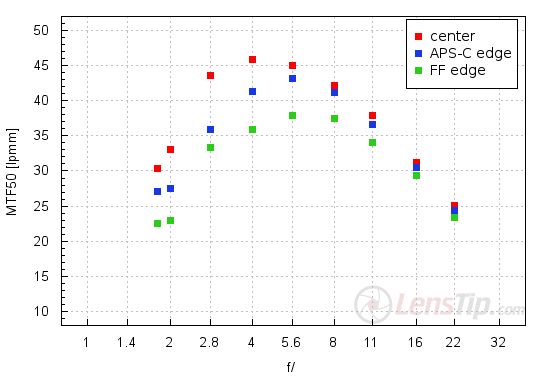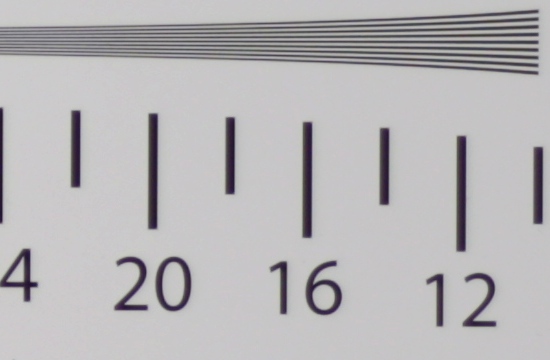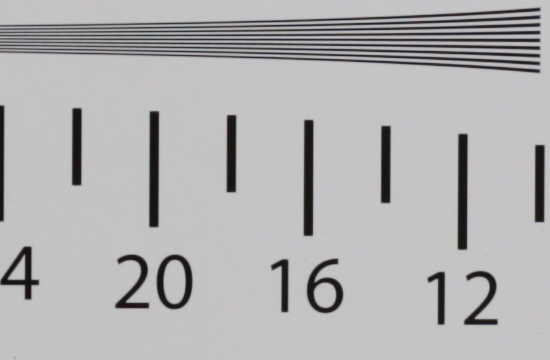Canon EF 50 mm f/1.8 STM
4. Image resolution
Let’s check how the tested lens compares here – its results in the frame centre on the edge of the APS-C/DX sensor and on the edge of full frame presents a graph below.

Please Support UsIf you enjoy our reviews and articles, and you want us to continue our work please, support our website by donating through PayPal. The funds are going to be used for paying our editorial team, renting servers, and equipping our testing studio; only that way we will be able to continue providing you interesting content for free. |
- - - - - - - - - - - - - - - - - - - - - - - - - - - - - - - - - - - - - - - - - - - - - - - -
The performance of the new Canon 1.8/50 STM in the frame centre we assess very highly. First of all already at the maximum relative aperture the lens provides a useful image and its maximum results by f/4.0 are very high, amounting to 45.9 ±0.8 lpmm. Still compared to its predecessor the new model fares in a very similar manner. The maximum achievement of the old lens was 46.2 ± 0.6 lpmm so ,within the margin of terror, identical. The new model is perhaps a tad better near the maximum relative aperture; still the difference is not significant, amounting to about 1 lpmm.
A huge improvement can be noticed on the edge of the frame, though. The old 1.8/50 II had problems with exceeding a quite low level of 20 lpmm when wide open already on the edge of the APS-C/DX sensor. The new model doesn’t provide fully useful images there as well but still its MTFs are as high as 27 lpmm. On stopping down to f/2.2 you already see fully useful images and the best resolution value amounts to over 43 lpmm. It is more than 5 lpmm higher than in the case of its predecessor.
A similar difference can be noticed on the edge of full frame. The predecessor at the maximum relative aperture barely exceeded 15 lpmm and the new Canon reaches 22.5 lpmm. Its maximum results amount to almost 38 lpmm while the older model wasn’t able to get higher than 34 lpmm.
To sum up: while using the Canon 1.8/50 STM it would be difficult to notice any significant advantage over the older model in the frame centre. However, the closer to the edge of the frame you go the more you are happy with the newer lens; overall it has no problems with defeating the old one there. It is an important piece of news as it means the performance of the Canon 1.8/50 STM is definitely closer to contemporary standards.
At the end of this chapter traditionally we present crops taken from photos of our resolution testing chart, saved as JPEG files along with RAW files used for the analysis above.
| Canon 5D Mk III, JPEG, f/1.8 |
 |
| Canon 5D Mk III, JPEG, f/4.0 |
 |






